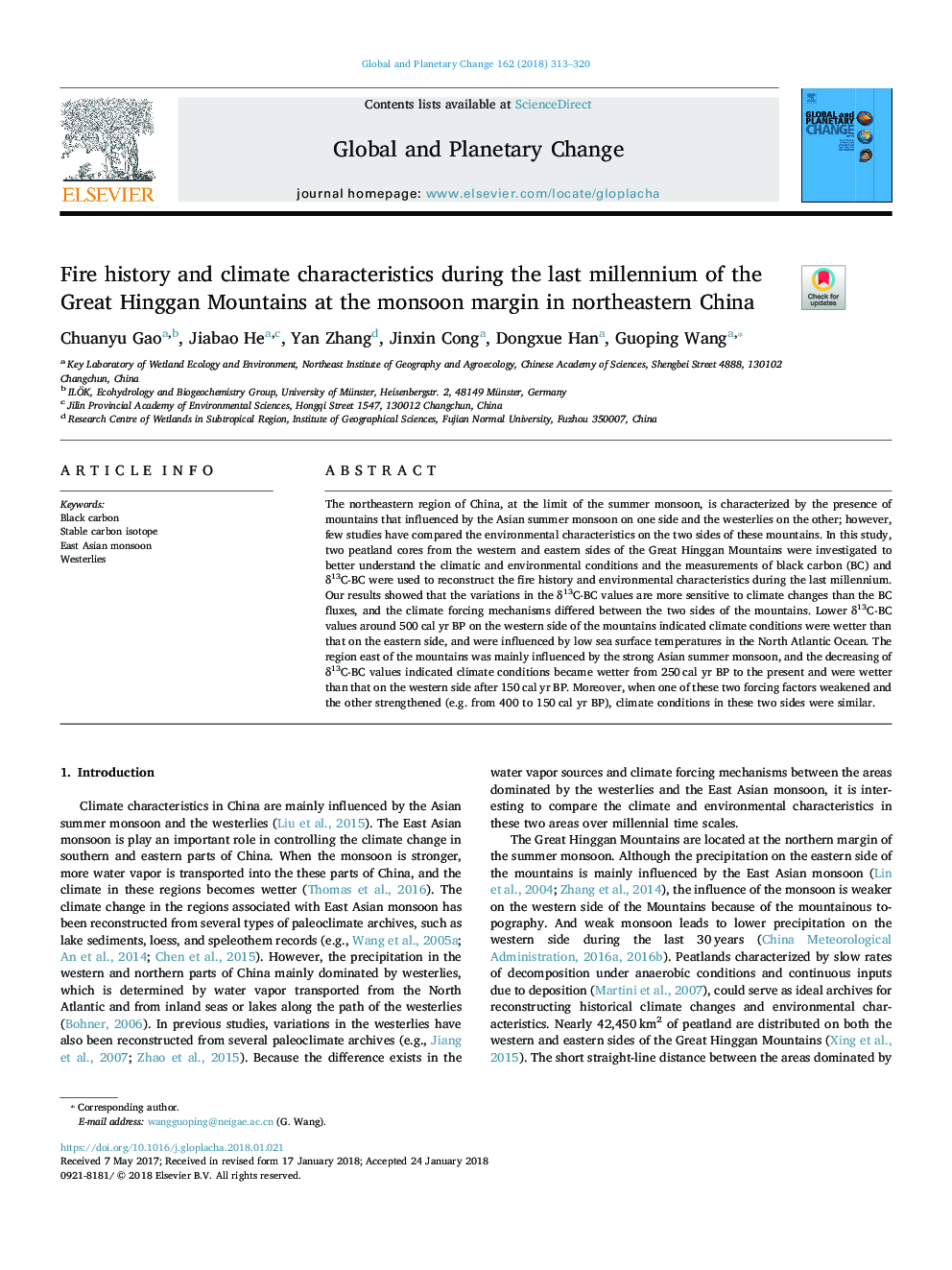| Article ID | Journal | Published Year | Pages | File Type |
|---|---|---|---|---|
| 8867598 | Global and Planetary Change | 2018 | 8 Pages |
Abstract
The northeastern region of China, at the limit of the summer monsoon, is characterized by the presence of mountains that influenced by the Asian summer monsoon on one side and the westerlies on the other; however, few studies have compared the environmental characteristics on the two sides of these mountains. In this study, two peatland cores from the western and eastern sides of the Great Hinggan Mountains were investigated to better understand the climatic and environmental conditions and the measurements of black carbon (BC) and δ13C-BC were used to reconstruct the fire history and environmental characteristics during the last millennium. Our results showed that the variations in the δ13C-BC values are more sensitive to climate changes than the BC fluxes, and the climate forcing mechanisms differed between the two sides of the mountains. Lower δ13C-BC values around 500â¯cal yr BP on the western side of the mountains indicated climate conditions were wetter than that on the eastern side, and were influenced by low sea surface temperatures in the North Atlantic Ocean. The region east of the mountains was mainly influenced by the strong Asian summer monsoon, and the decreasing of δ13C-BC values indicated climate conditions became wetter from 250â¯cal yr BP to the present and were wetter than that on the western side after 150â¯cal yr BP. Moreover, when one of these two forcing factors weakened and the other strengthened (e.g. from 400 to 150â¯cal yr BP), climate conditions in these two sides were similar.
Related Topics
Physical Sciences and Engineering
Earth and Planetary Sciences
Earth-Surface Processes
Authors
Chuanyu Gao, Jiabao He, Yan Zhang, Jinxin Cong, Dongxue Han, Guoping Wang,
